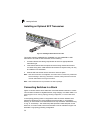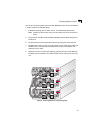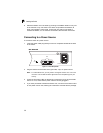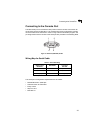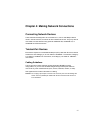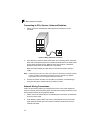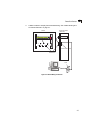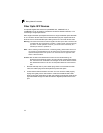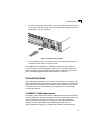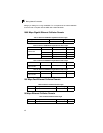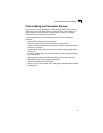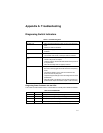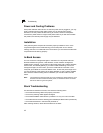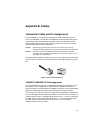
Making Network Connections
4-4
4
Fiber Optic SFP Devices
An optional Gigabit SFP transceiver (1000BASE-SX, 1000BASE-LX, or
1000BASE-LH) can be used for a backbone connection between switches, or for
connecting to a high-speed server.
Each single-mode fiber port requires 9/125 micron single-mode fiber optic cable with
an LC connector at both ends. Each multimode fiber optic port requires 50/125 or
62.5/125 micron multimode fiber optic cabling with an LC connector at both ends.
Warning:This switch uses lasers to transmit signals over fiber optic cable. The lasers are
compliant with the requirements of a Class 1 Laser Product and are inherently
eye safe in normal operation. However, you should never look directly at a
transmit port when it is powered on.
Note: When selecting a fiber SFP device, considering safety, please make sure that it
can function at a temperature that is not less than the recommended maximum
operational temperature of the product. You must also use an approved Laser
Class 1 SFP transceiver.
Hinweis: Bei der Wahl eines Glasfasertransceivers muß für die Beurteilung der
Gesamtsicherheit beachtet werden, das die maximale Umgebungstemperatur
des Transceivers für den Betrieb nicht niedriger ist als die für dieses Produkts.
Der Glasfasertransceiver muß auch ein überprüftes Gerät der Laser Klasse 1
sein.
1. Remove and keep the LC port’s rubber plug. When not connected to a fiber
cable, the rubber plug should be replaced to protect the optics.
2. Check that the fiber terminators are clean. You can clean the cable plugs by
wiping them gently with a clean tissue or cotton ball moistened with a little
ethanol. Dirty fiber terminators on fiber optic cables will impair the quality of the
light transmitted through the cable and lead to degraded performance on the
port.



